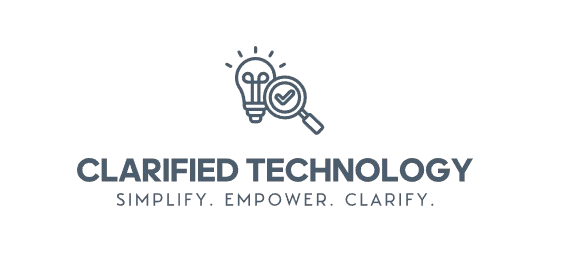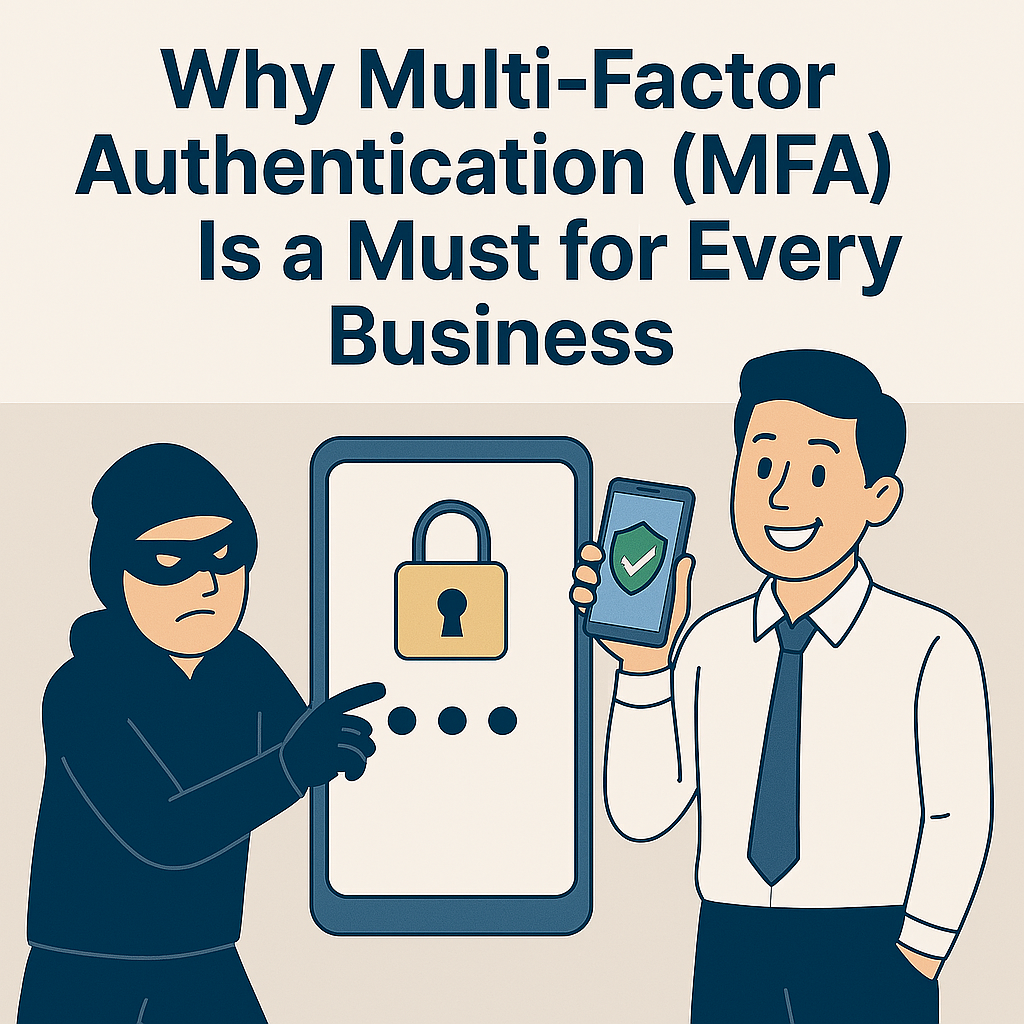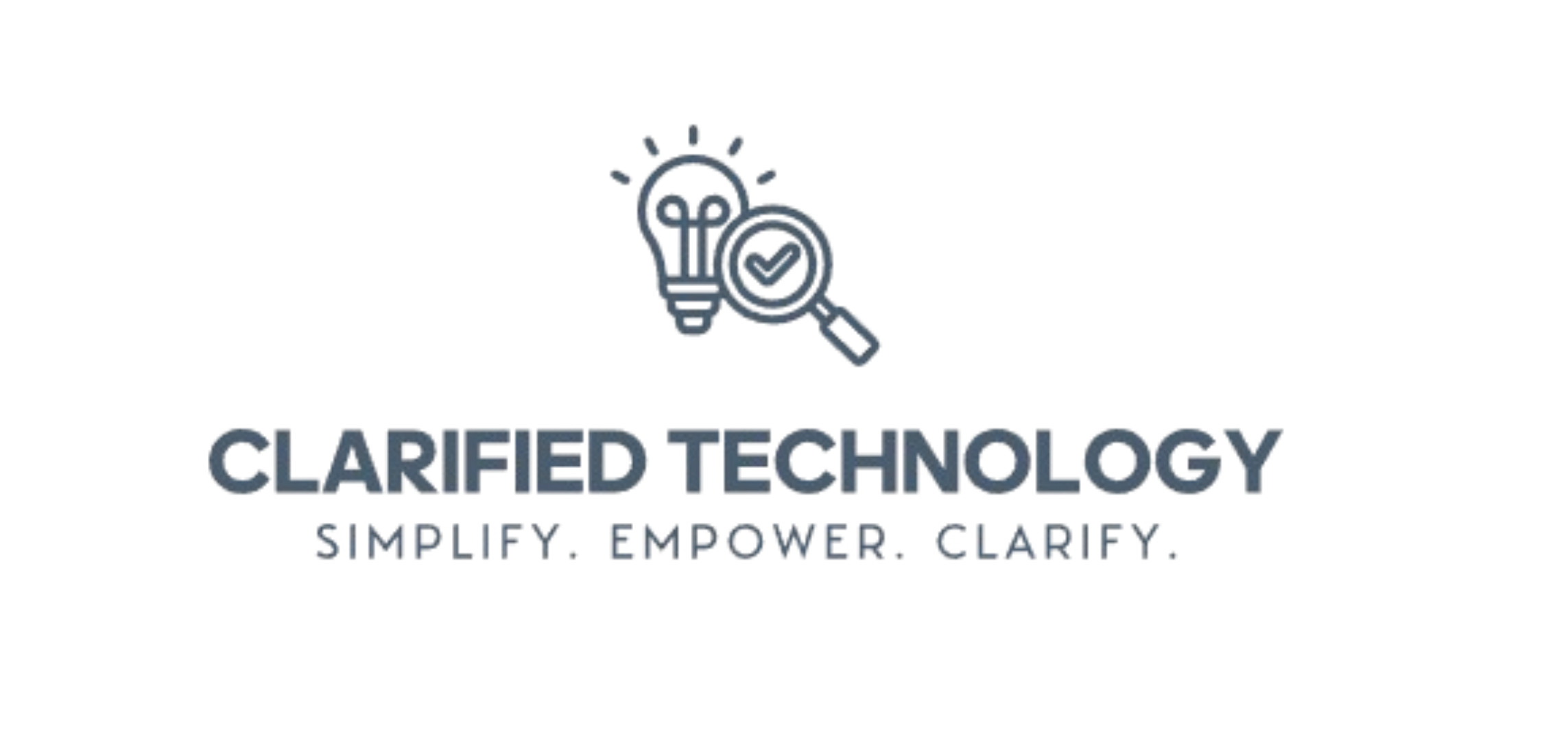Why Multi-Factor Authentication (MFA) Is a Must for Every Business
Cybersecurity threats are rising across every industry, and businesses of all sizes are being targeted—not just large corporations. For many organizations, the easiest and most impactful security upgrade they can make is implementing Multi-Factor Authentication (MFA).
If your business is still relying solely on passwords, this article will explain what MFA is, why it’s essential, and how it significantly reduces the risk of data breaches.
What Is Multi-Factor Authentication (MFA)?
Multi-Factor Authentication is a security method that requires users to provide more than just a password to log into an account or system. It combines two or more forms of verification, usually from the following categories:
Something you know (password or PIN)
Something you have (a smartphone, app, or security token)
Something you are (biometric, like a fingerprint or face scan)
For example, a user might enter their password and then confirm their identity with a code sent to their phone or through an authentication app like Microsoft Authenticator or Google Authenticator.
This second layer of security means that even if someone steals your password, they still can’t access your systems without the second factor.
Why Passwords Alone Are Not Secure
Passwords are no longer enough to protect business accounts. Here’s why:
Many users reuse passwords across multiple sites.
Passwords can be phished or leaked in data breaches (even from major platforms).
Attackers use automated tools to test stolen credentials across thousands of websites.
This technique, known as credential stuffing, is one of the most common entry points for cyberattacks. If a bad actor gains access to a user’s email, they can potentially reset passwords for other services, impersonate staff, and steal sensitive data.
MFA stops this type of attack from succeeding.
How Effective Is MFA at Preventing Attacks?
According to Microsoft, 99.9% of account compromise attacks can be blocked simply by enabling MFA.
Other cybersecurity research supports this:
Google found that MFA can prevent up to 100% of automated bot attacks and 96% of phishing attempts.
Ransomware incidents often begin with compromised credentials—MFA can prevent this initial entry point.
In short: MFA is one of the simplest and most effective defenses against unauthorized access.
Is MFA Difficult to Use?
Many business owners worry that MFA will slow down their team or cause frustration, but the truth is that modern MFA tools are designed to be quick and user-friendly.
For most users, MFA simply involves:
Entering their password as usual
Approving a push notification or entering a short code from their phone
These steps typically take just a few extra seconds and quickly become a normal part of the login process. Authenticator apps are even easier and more secure than traditional text message codes.
Where Should MFA Be Enabled?
Your business should implement Multi-Factor Authentication for any system or application that stores sensitive data or controls access to business operations. This includes:
Business email accounts (Microsoft 365, Google Workspace)
Remote access tools (VPNs, Remote Desktop, etc.)
Cloud storage (OneDrive, SharePoint, Dropbox, Google Drive)
Accounting and financial software (QuickBooks, banking portals)
Password managers
Admin accounts or privileged users
If you’re not sure where to begin, start with the accounts that would cause the most damage if compromised—email, file storage, and financial systems.
Why MFA Should Be Part of Every Business’s Cybersecurity Strategy
Businesses today are facing more sophisticated and frequent cyber threats than ever before. While firewalls and antivirus software are still necessary, they’re not enough on their own. MFA addresses the reality that humans make mistakes—they click phishing links, reuse passwords, or fall for scams.
Multi-Factor Authentication acts as a fail-safe when those human errors occur.
It’s low-cost, easy to implement, and immediately improves your organization’s security posture.
Need Help Setting Up MFA for Your Business?
At Clarified Technology, we help businesses implement Multi-Factor Authentication as part of a complete cybersecurity strategy. We’ll guide you through deployment, train your staff, and ensure it’s done right—without disrupting your workflow.
Contact Us today to schedule a free consultation and take the first step toward securing your business.


